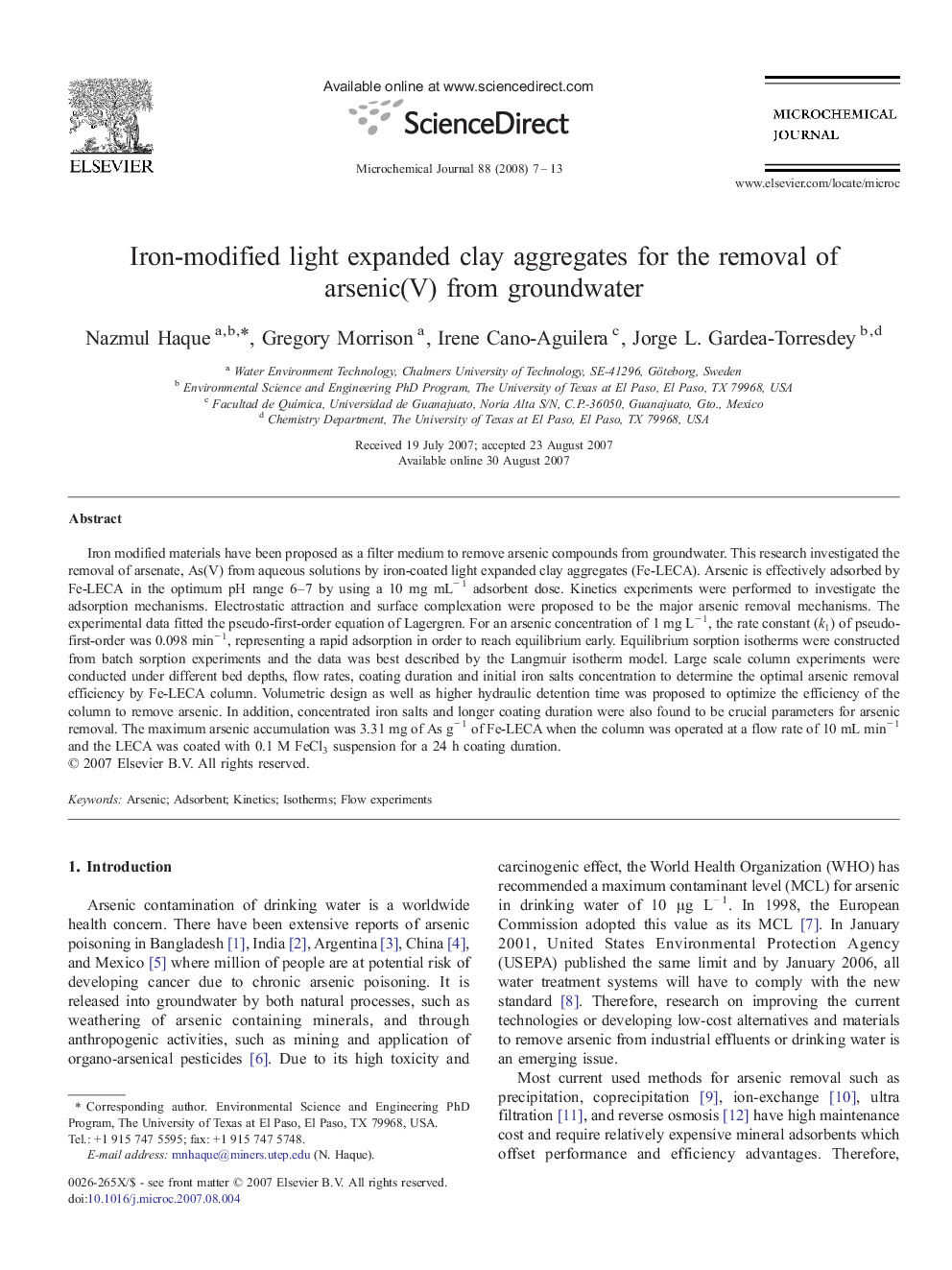| Article ID | Journal | Published Year | Pages | File Type |
|---|---|---|---|---|
| 1228295 | Microchemical Journal | 2008 | 7 Pages |
Iron modified materials have been proposed as a filter medium to remove arsenic compounds from groundwater. This research investigated the removal of arsenate, As(V) from aqueous solutions by iron-coated light expanded clay aggregates (Fe-LECA). Arsenic is effectively adsorbed by Fe-LECA in the optimum pH range 6–7 by using a 10 mg mL− 1 adsorbent dose. Kinetics experiments were performed to investigate the adsorption mechanisms. Electrostatic attraction and surface complexation were proposed to be the major arsenic removal mechanisms. The experimental data fitted the pseudo-first-order equation of Lagergren. For an arsenic concentration of 1 mg L− 1, the rate constant (k1) of pseudo-first-order was 0.098 min− 1, representing a rapid adsorption in order to reach equilibrium early. Equilibrium sorption isotherms were constructed from batch sorption experiments and the data was best described by the Langmuir isotherm model. Large scale column experiments were conducted under different bed depths, flow rates, coating duration and initial iron salts concentration to determine the optimal arsenic removal efficiency by Fe-LECA column. Volumetric design as well as higher hydraulic detention time was proposed to optimize the efficiency of the column to remove arsenic. In addition, concentrated iron salts and longer coating duration were also found to be crucial parameters for arsenic removal. The maximum arsenic accumulation was 3.31 mg of As g− 1 of Fe-LECA when the column was operated at a flow rate of 10 mL min− 1 and the LECA was coated with 0.1 M FeCl3 suspension for a 24 h coating duration.
